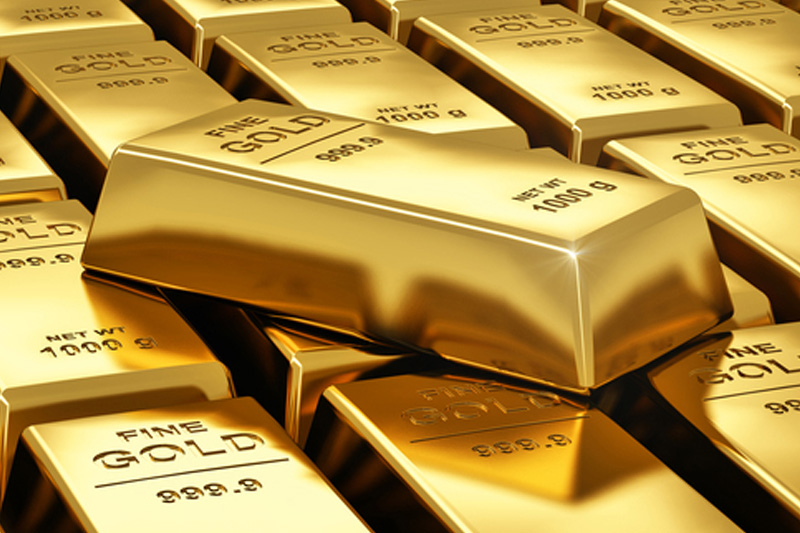Investing.com -- Gold prices dipped Wednesday but held above the key $1,900 support after data showed U.S. inflation grew for a second month in a row, causing the Federal Reserve some discomfort but enough analysts said to drastically change the central bank’s outlook on rates.
Gold’s most-active futures contract on New York’s Comex, December, settled at $1,932.50 an ounce, down just $2.60, or 0.05%, on the day.
The spot price of gold, which is more closely followed than futures by some traders, was at $1,909.03 by 14:55 ET (18:55 GMT), down $4.46, or 0.2%. Earlier in the session, spot gold fell to as low as $1,905.88 — less than $5 from falling to $1,800 levels.
“Gold bulls have staved off an immediate plunge to below $1,900 pricing,” said Sunil Kumar Dixit, a chartist for spot gold at SKCharting.com. “The main challenge for the bulls would be to reclaim the 50-day Exponential Moving Average of $1,928, which is a turning point for momentum.”
Gold dipped as U.S. consumer prices, egged on higher fuel prices, climbed a second month in a row to reach a year-on-year growth of 3.7%, according to Labor Department data on Wednesday that placed renewed pressure on inflation fighters at the Federal Reserve.
“Gold trades are digesting this inflation report and are starting to see holes in the economy,” said Ed Moya, analyst at online trading platform OANDA.
“At the very most, gold might have to deal with one more Fed rate hike in November, but it is clear that the economy will steadily weaken going forward. Bad economic news is about to become good news again for gold. Wall Street is getting closer to putting a peak in place for the dollar.“
U.S. headline inflation, as measured by the Consumer Price Index, or CPI, hit 40-year highs of more than 9% in June 2022 before falling to as low as 3.0% by June last year. Since then, it has been on the rise, adding a rounded-up 0.7% over the past two months, as high global oil prices bumped up fuel costs at home.
“Over the last 12 months, the all items index increased 3.7 percent before seasonal adjustment,” the Labor Department said in a news release. “The index for gasoline was the largest contributor to the monthly all items increase, accounting for over half of the increase.”
Fed likely to make no change at next week's decision on rates
To fight inflation, the Fed has raised rates by 5.25% from a base of just 0.25% in March 2022. It is scheduled to decide on interest rates nex at its policy meeting on September 20.
Immediate projections of economists after the release of the latest CPI reading suggest the Fed will leave rates unchanged after a 25-basis point increase in July. Economists, however, think the central bank will opt for at least another rate hike before the end of the year, either at its November policy meeting or the one in December.
After the release of the CPI data, “the September hike odds are down to 5% but December held steady” at 53%, economist Adam Button said on the ForexLive forum.
High global oil prices, and their impact on gasoline costs at US pumps, could push the Fed to be aggressive again with rate hikes just as the central bank seems intent on allowing the interest rate increases it had levied over the past 18 months to work on lowering inflation.
Global oil prices hit 10-month highs of $92.83 for U.K. Brent and $89.64 for U.S. West Texas Intermediate crude on Wednesday, responding to a chokehold on production by major crude exporters Saudi Arabia and Russia.
(Ambar Warrick contributed to this item)
